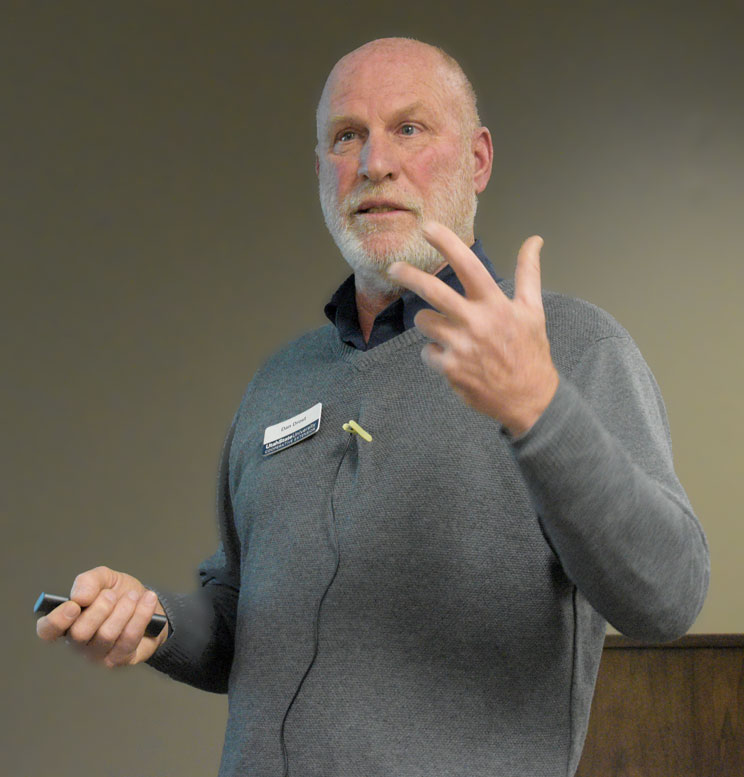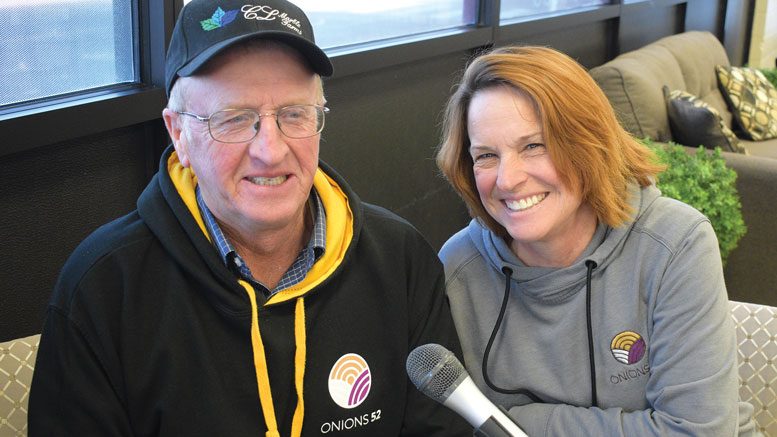|
Click to listen to this article
|
By Dan Drost and Claudia Nischwitz, Utah State University
Onion seed priming and season-long crop health were featured topics covered during the 2022 Utah Onion Association winter meeting held Feb. 8.
Seed Priming
Dan Drost, Utah State University vegetable specialist, reported on the 2021 seed priming project and its implication for stand establishment and final bulb uniformity.
“Our findings in controlled conditions show that the percent germination, speed of germination and uniformity of germination is much better for primed seeds than raw seeds at temperatures below 50 degrees Fahrenheit (10 degrees Celsius),” Drost said.
Given these findings, growers planting early in cold soils should really consider adding priming to their seed package to help get plants up quickly, Drost advised.
He then described how primed and raw seed reacted to field conditions. Three different locations were used in 2021, and after sowing, seedling emergence was monitored every other day until no more seedlings emerged.
“Like in the controlled studies, we saw faster and more uniform emergence with primed seeds in the field, but final plant stands (percent emergence) was not different between raw or primed treatments,” Drost reported.
As each seedling emerged, a small colored plastic toothpick was used to identify the date of seedling emergence and its position relative to other plants. At harvest, these individual bulbs were size graded and weighed.
“What was really interesting was that later-emerging seedlings produced significantly smaller bulbs, many of them less than 2.25 inches in diameter,” Drost noted.
In addition, while total yield wasn’t different between raw and primed seeds, most bulbs in the raw seed treatments were slightly smaller (64 percent sized as 2.75-inch, 3-inch or 3.25-inch diameter) compared to primed seed (68 percent size graded as 3-inch, 3.25-inch or 3.5-inch diameter bulbs). Drost noted that the shift in size was likely related to the earlier and more uniform emergence of the primed seeds.

Bacterial Rot
Claudia Nischwitz, Utah State University plant pathologist, shared details on the national “Stop the Rot” onion project. “Stop the Rot” is designed to identify and manage bacterial diseases that affect onions in the field and storage.
“In 2021, we found Enterobacter, Pantoea and Pseudomonas bacteria in Utah onion fields,” she reported, adding that most of these pathogens did not cause serious problems, but knowing what diseases are present helps us understand the pathogens and their prevalence.
“Utah commonly has few bacterial diseases due to the dry conditions experienced during the growing season,” she said.
However, growers need to know what problems are potentially out there and how to mitigate infection risk both in the field and in storage. Nischwitz reported that field surveys will occur again during 2022 and Utah growers interested in having their fields evaluated should contact her.
One disease that caused some storage rot problems in 2021 is Fusarium bulb rot. The disease is caused by Fusarium proliferatum, and while outbreaks are rare, the disease may be misidentified as symptoms often resemble Botrytis neck rot. The difference with Fusarium bulb rot is that, frequently, fungal mycelium can be seen growing between the scales in the bulb, noted Nischwitz. If you grow white onions, you usually see a faint pink coloration on or just underneath the outer skin but no rotting. Due to the rare occurrence of Fusarium bulb rot, little is known about the pathogen and the disease. Nischwitz’s lab has started research to learn more about the pathogen, disease cycle and management strategies for growers.
The Utah Onion Association plans to hold its summer field day in Box Elder County on Aug. 9.

